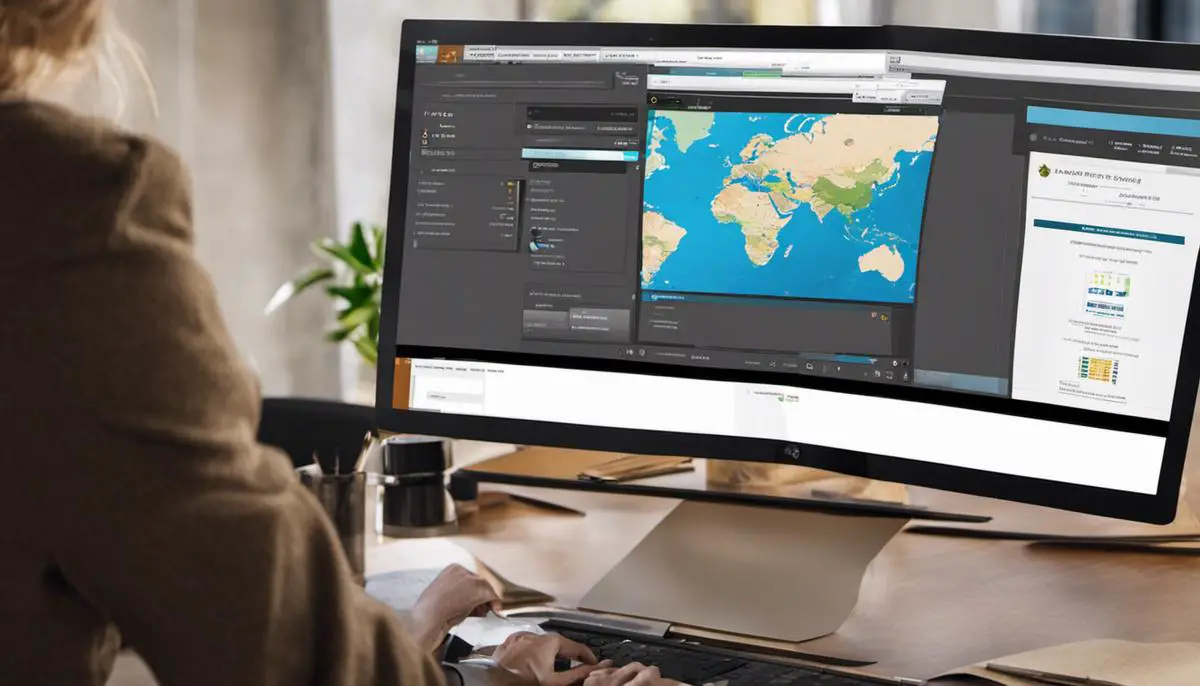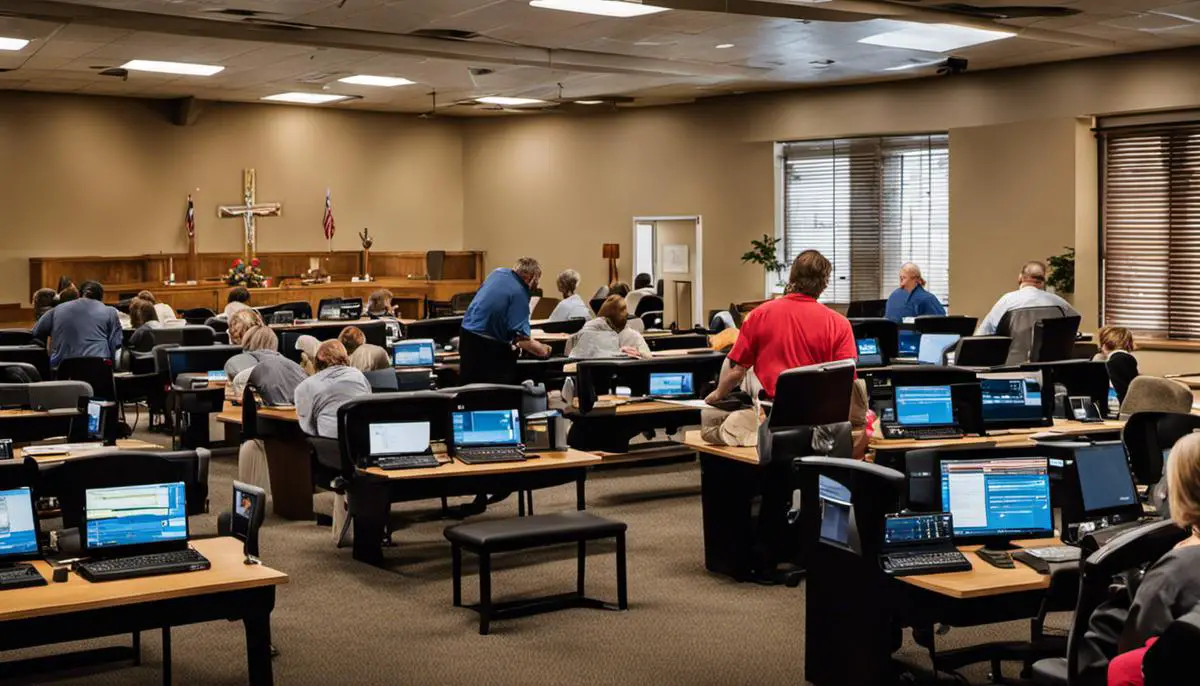The modern era, marked by rapid technological advancements, has seen a tremendous shift in how churches manage their donations. Such changes demand adaptation and innovation, particularly in the field of donation management. This article delves into the growing need for donation tracking software in churches, detailing how they bolster transparency, streamline operations, and ensure audit compliance. It draws attention to the key features of a robust software, imparting knowledge on how to choose a suitable one, and elucidates on its successful implementation and maximization in a church’s environment.
Understanding the need for donation tracking software in churches
Donation tracking software – a term that might seem mundane, yet its strategic role in a church’s operations is anything but trivial. This technology not only lends a hand in transparency and financial planning, but it also brings a new dimension to the faith community—allowing congregations, both large and small, to change the way they function in entirety.
Rapid advancement in technology transforms all sectors. The religious sector is no different. The challenge has always been to use technology to enhance operations without compromising the core virtue of faith. The answer? Donation tracking software. Now the question that emerges—why is it considered a game-changer for church operations?
Primarily, donation tracking software rolls out an incredible opportunity for organized tracking. Gone are the days of manual ledger books, collecting envelopes, and cash counting. The software automates the donation recording process—tracking all gifts, grants, and contributions. In just a few clicks, church administrators can keep track of who donated, how much, and when, ensuring better planning and financial stability for the organization.
The faithful are well-acquainted with the concept of tithing, an act of faith to give one-tenth of one’s income or possession to the church or charity. A tracking system elevates this process, providing an inclusive platform for the community to donate seamlessly. The growth of a church’s donor base can dramatically increase when it’s simple and convenient for members to contribute.
Perhaps the most profound contribution of the software is the transparent financial operation. Churches, entrusted with community support, have a moral obligation towards their patrons to showcase their financial stewardship. The software not only allows churches to keep track of incoming donations but also emphasizes the outgoing expenses, helping to establish the trust factor with transparency and accountability.
More to the point, there’s financial compliance and tax-related reporting. The IRS demands accurate financial records for non-profit entities like churches. The tracking software makes reporting a breeze with its ability to generate comprehensive donation reports, enabling churches to fulfill their fiscal responsibilities without complications.
There’s also a better way to communicate and acknowledge the donors. A personalized ‘thank you’ note, a shout-out, or a scribbled card – all can be managed and executed by a robust tracking software. It ensures the timely acknowledgement of patrons and makes them feel appreciated, which can further help in retaining and expanding a donor base.
To summarize, donation tracking software is not merely a tool—it’s a transformative strategy for church operations. The combination of effortless donation, organized tracking, financial compliance, transparency, and communication management makes it a game-changer for the religious sector. The outcome? An empowered, engaged, and financially secure faith community.
This march of technology is relentless and adapts to meet the needs of every industry. Churches, though bastions of tradition, are not exempt from this transformation. Rather than resisting change, embrace the innovation that enhances service towards the congregation and society. After all, a church isn’t just a house of worship—it’s an engine of community development. Embrace the change and witness the positive difference.

Key features of a robust church donation tracking software
While the transformative role of donation tracking software is already revamping operations in churches, it is essential to comprehend what exact features bring this significant boost. Revealing these core features not only helps software developers refine their offerings, but gives churches a baseline for evaluating which software best harmonizes with their financial management goals.
Firstly, let’s talk about data management. The most fundamental feature should be robust data management capabilities. Any software in this niche should be able to handle vast amounts of data pertaining to donors, donations, dates, amounts, and event-specific donations. The software needs to be capable of sorting, storing, retrieving, and interpreting all this data effortlessly and in real-time. Data management is where the efficiency of these systems comes to fruition.
However, data management alone won’t suffice. That’s where security measures come into play. Any decent church donation tracking software must offer superior data security protocols. Given the sensitive nature of financial information, safeguarding donor data is non-negotiable. The system should employ strong encryption methods, multi-factor authentication, and regular security audits to prevent data breaches and maintain the trust of the donor community.
Next, let’s consider reporting and analytics. Churches need a clear picture of their donation trends to guide decision-making, budget allocation, and financial planning. This points to robust reporting and analytics being another indispensable feature. The software should be able to furnish detailed reports conveniently and include visual elements like charts and graphs for easy interpretation. Such comprehensive insights can significantly impact strategic decisions on fundraising, donor engagement, and resource allocation.
Integration capabilities are just as crucial. The donation tracking software should seamlessly integrate with other church management systems in use, including accounting, outreach, community management, and calendar systems. This integration permits smooth data flow and assures optimal usage of resources, reducing redundancies while ensuring efficiency and accuracy.
Finally, but no less importantly, the software must ensure a superlative user experience. The final users of this software aren’t necessarily tech-savvy clergymen or church staff. Therefore ease of use, simple onboarding, and intuitive navigation are crucial. To add to that, providing reliable customer support can go a long way in ensuring nothing hinders the churches’ efforts to streamline their financial management.
Selecting software endowed with these core features can substantially lift up a church’s financial management, embracing the innovation brought by technology while upholding the sanctity and purpose of the religious sector. With evolving financial landscapes and increasing regulatory pressure, these tools are no longer a luxury but a necessary partner for churches worldwide.

Selecting the right church donation tracking software
As we advance further into the digital era, implementing innovative solutions is crucial in any sector, and religious organizations are no exception. Building on this conversation, it’s important to highlight some indispensable factors that should be noted when choosing the optimal donation tracking software for your church.
One key facet to scrutinize in prospective software is the ability to efficiently manage high volumes of data. Churches often grapple with a broad range of donor details that span multiple demographics. Select software that can readily organize, store, and retrieve this information. Scalability is also paramount as your congregation grows and the volume of data increases.
In an era of rife data leaks and cybercrime, it is non-negotiable for software to have top-tier security features. Donors entrust sensitive financial information to the church. Therefore, the chosen software should fortify this trust by implementing strong encryption protocols, two-factor authentications, or other advanced security measures.
Equally important is the software’s capacity for extensive reporting and analytics. By unearthing patterns and trends in donations, these tools can help strategize future fundraising campaigns and donor retention techniques. Powerful analytics can turn raw data into actionable insights, facilitating smart decision-making.
As churches often use multiple systems for managing various aspects of their operations, integration must be seamless. The right donation tracking software integrates smoothly with other management systems, promoting coherence and simplifying administrative tasks, leading to streamlined operations.
Ease of use cannot be overlooked. User-friendly software is essential to ensure comfortability and speedy adaptation throughout the church. A simple, intuitive navigation interface can significantly ease the learning curve for staff members.
A sterling customer service team backing your chosen software is essential. The transition to a new system or troubleshooting technical glitches can be challenging even for the most tech-savvy. Having a reliable, accessible, and knowledgeable customer support system can make all the difference in your church’s experience with the software.
In conclusion, technology continues to foster opportunities and disruptions across all sectors. In the savvy spirit of entrepreneurship, churches can leverage these disruptions to better cater to their congregation. As such, by considering these key factors when selecting their donation tracking software, churches can simplify operations, foster transparency, build donor trust and ultimately influence a positive impact in their communities.

Implementing and maximizing the use of donation tracking software
The journey for a church to bring technology into their operations can often be daunting. A golden thread that runs through the successful implementation of donation tracking software lies in proper planning and strategy.
First, it is crucial for churches to acknowledge the need for software implementation and the role it plays in expanding and streamlining operations. A defined vision catalyzes the congregation’s acceptance, paving the way for an immediate shift from manual processing to an automated system. Involving key stakeholders in the planning phase provides chances of higher adoption rates and lowers the risk of resistance to change. This can range from church leaders to administrative staff and volunteers.
Selection of the right software requires a strategically planned approach, which includes identifying current operational needs, mapping user requirements, setting roll-out timelines, and deciding on a budget. A good piece of advice would be to try out multiple software options via trials before settling for the perfect fit. This gives a practical demonstration of how each software option will deliver for your church’s specific needs and expectations.
Education and training are paramount once the software is chosen. All users should be briefed about the system’s business impact and the individual benefits they can reap from it. Conducting hands-on training sessions or workshops will enhance the congregational understanding of the software’s functions. It’s advisable to assign ‘change champions’ who motivate and support other users on this technological journey.
As it is rightly said, the proof of the pudding is in the eating. Over time, churches will need to evaluate the software’s performance against the set objectives. Using key performance indicators (KPIs) such as total donations tracked, time saved, accuracy of financial reports, donor outreach, and user adoption rates could indicate the effectiveness of the software.
It is essential to remember that no system is perfect right out of the box. Continuous feedback will identify improvements, and the software provider should be proactive in customizing the solution to fit changing needs.
Lastly, churches must ensure they are not left high and dry by software providers once implementation is complete. A reliable and dedicated support system should be available to address queries, provide updates and ensure churches continue to optimize the software’s use.
Software technology, when implemented strategically and effectively, can truly be the game-changer in church operations. It’s a transformative movement that takes the church from simply keeping up with the times to leading the way in operational excellence. With such a system in place, churches are able to improve efficiency, increase transparency, and ensure compliance, thus enhancing their service to the community. In this digital age, software implementation is the apt way to mirror the progression of society, thereby making the church more accessible and convenient for the modern congregation.
Remember, it isn’t technology that drives change, but rather how you harness its potential. With a carefully crafted strategy, diligent planning, and commitment towards continuous learning, churches can fruitfully clasp this digital revolution, ensuring their operations are up-to-date, effective, and most significantly, centered around serving their community.

Smart and effective use of donation tracking software can revolutionize the way a church functions, increasing not only the transparency of its financial interactions but also fostering a stronger connection with its donors. The selection and usage of a robust system demand careful thought and consideration, as they shape the future administration and operational strength of the church. To navigate the dynamic technological landscape and manage donations effectively, it pays to be informed, adaptive, and forward-thinking. Ultimately, the insights imparted throughout this article aim to instill these qualities, helping churches to thrive in the digital age.












